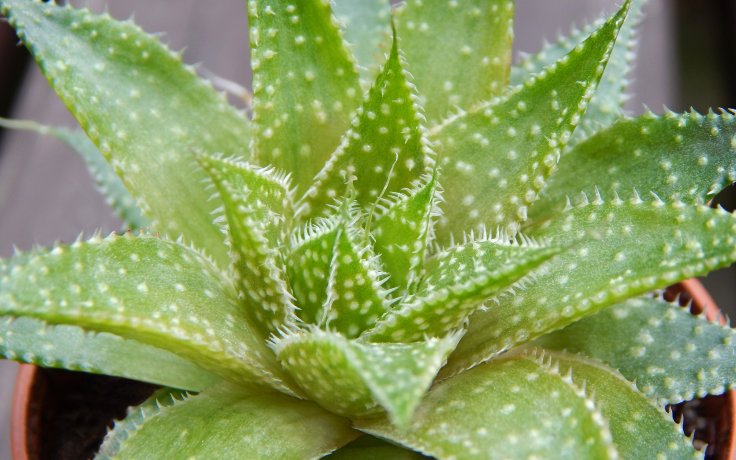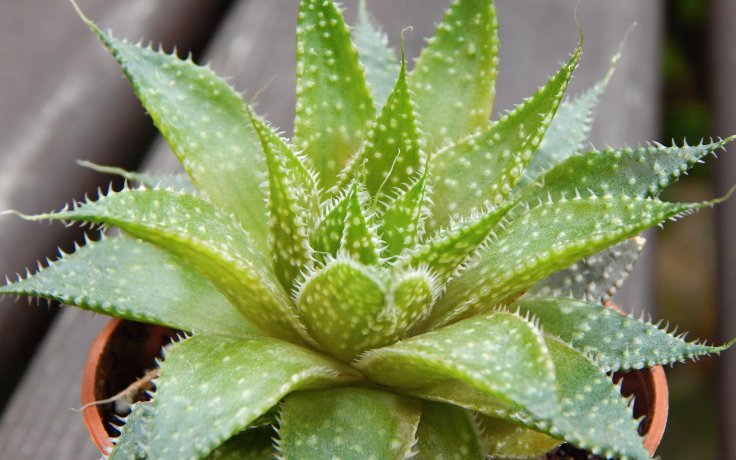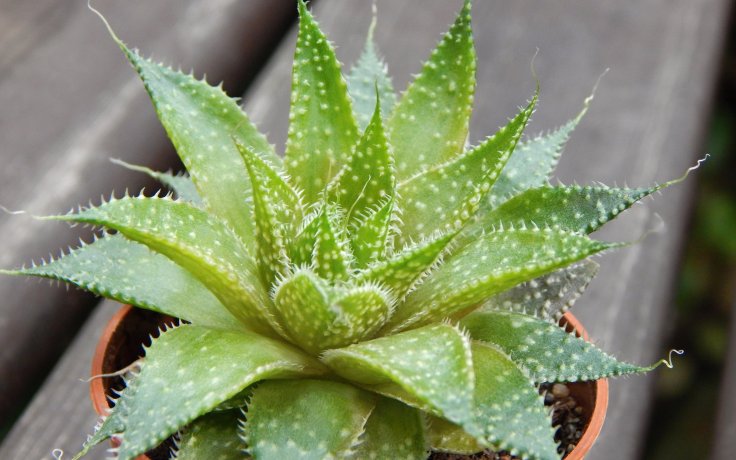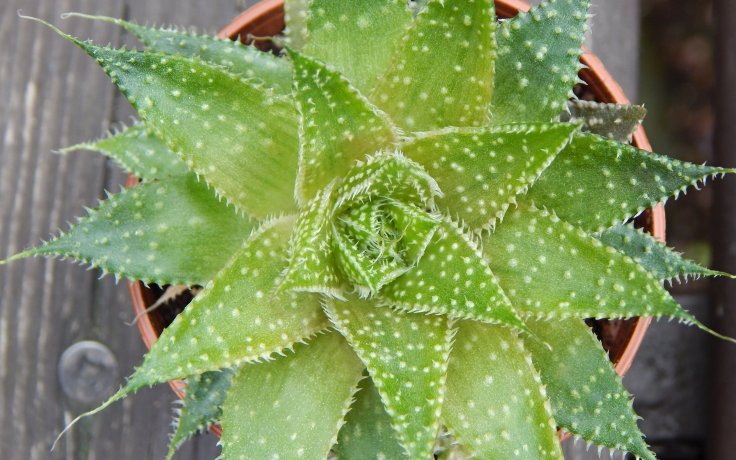- Home
- Succulents
- Aloe
- Aloe aristata





Aloe aristata
Ideally placed in partial shade.
Always water a few days after the substrate has dried out. Reduce watering in winter.
It can tolerate -12,2 °C in the short term. However, the plant is not hardy.
The epithet "aristata" translates as having awns. It refers to the serrated edges and growths on the leaves.
Aloe aristata, known professionally as Aristaloe aristata, is a succulent plant of the family Asphodeliaceae, native to southern Africa. It is the only species of the genus Aristaloe. The name 'aristata' comes from Latin and means 'having awns', referring to the fine white growths covering the leaves. It is also called Lace Aloe. The people of the MPondo tribe mix its juice with water and then wash themselves with it. It is very refreshing.
It forms a compact rosette of many soft but fleshy, dark or light green leaves. The intensity of the green shade is influenced by the amount of watering and the amount of sunlight. They grow to a length of 8-10 cm and the rosette can reach a diameter of up to 15 cm. It is thus more of a small Aloe. The surface of the leaves is covered with small white growths and the edges and underside of the leaves are finely toothed.
Flowers appear in late spring to early summer on stems up to 50 cm tall. They are usually orange-red and tubular.
Aloe aristata is such a succulent classic. It is a typical Aloe (Aristaloe) that has been cultivated in this country for many decades. It is suitable for someone who is looking for a decorative classic and wants a plant with a little detail, represented here by the teeth on the leaves.